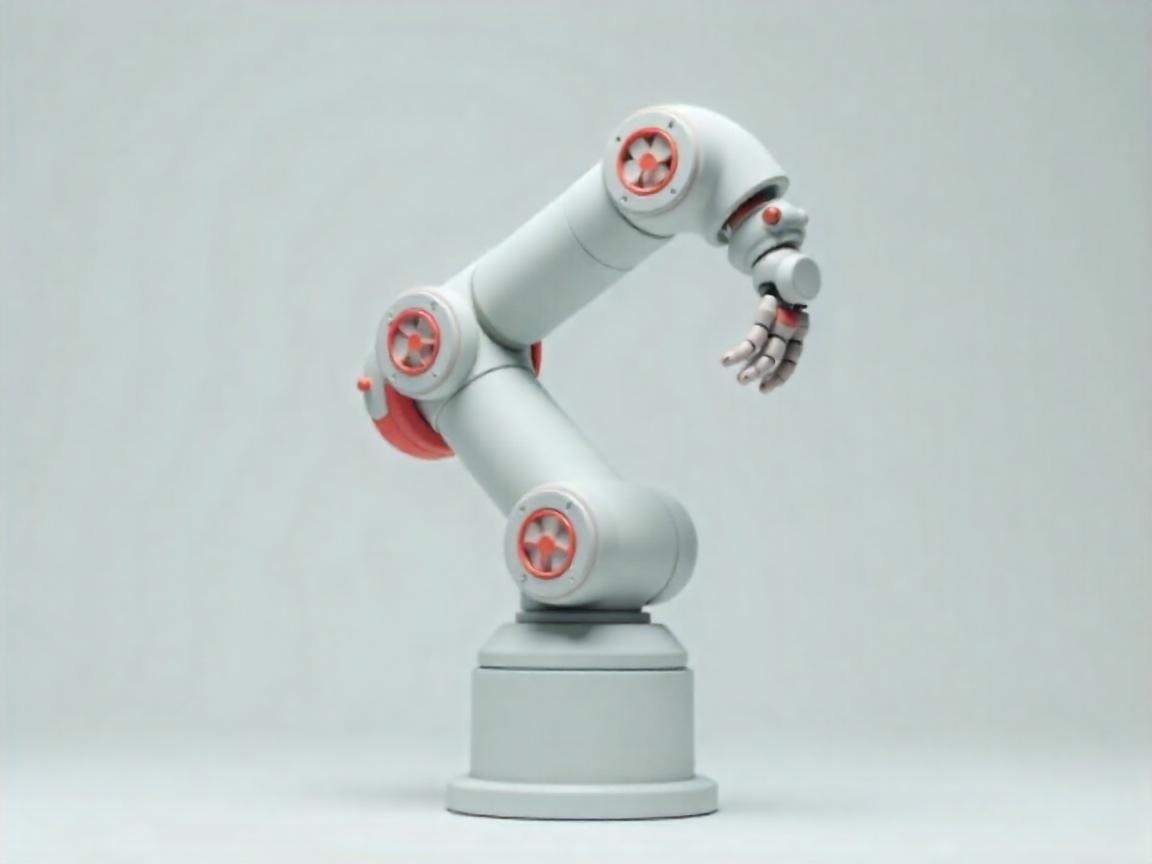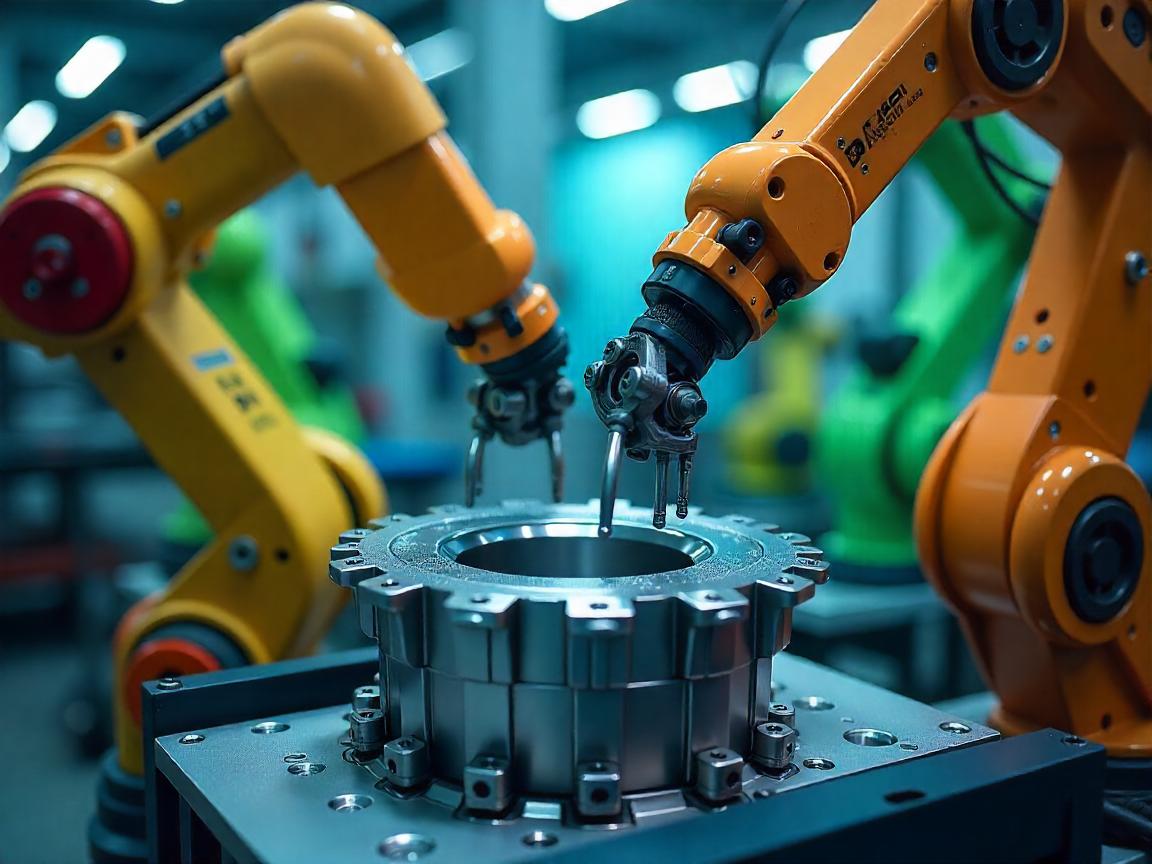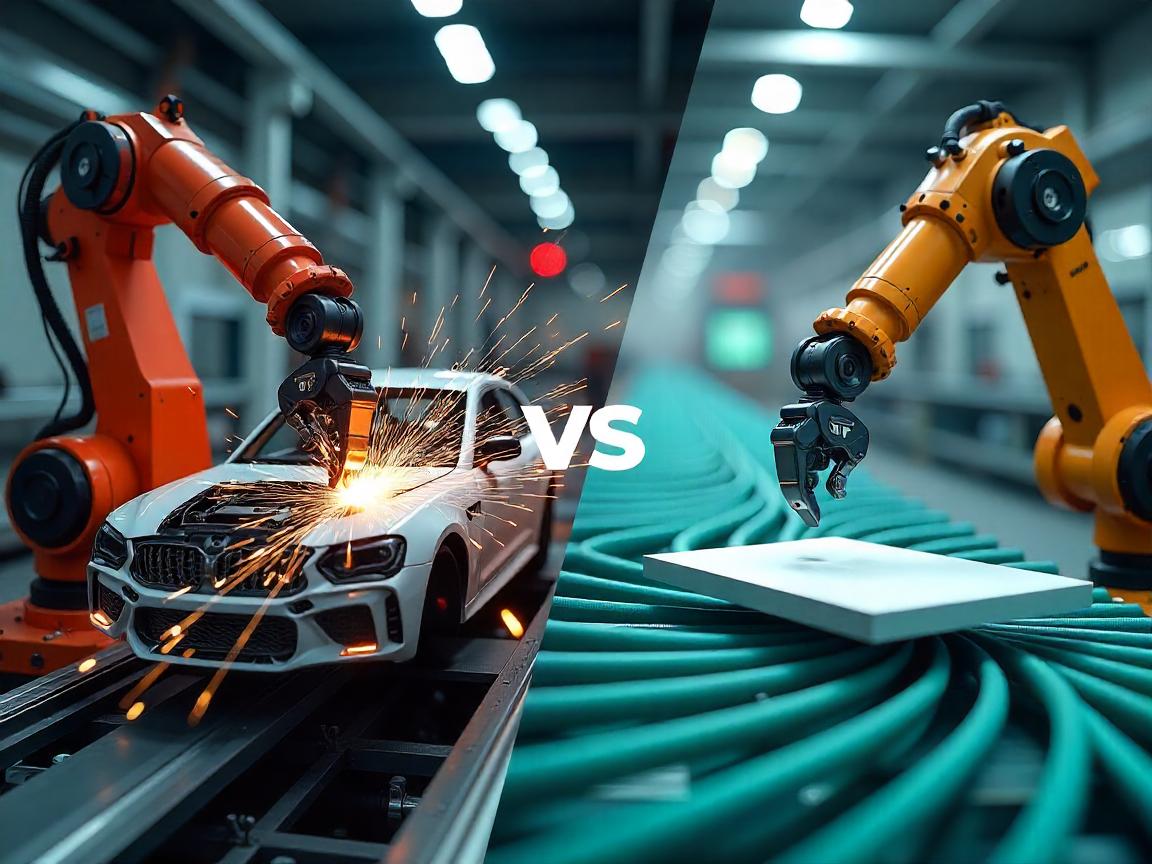Introduction: The Robotics Dilemma in the Modern Industrial Era
Robotics technology has significantly matured over the past two decades, transforming how industries operate and compete. As automation becomes a cornerstone of operational efficiency, many businesses are confronted with a critical decision: Should they invest in collaborative robots (cobots) that are flexible and safe to work alongside humans, or go with traditional industrial robots known for their brute strength, speed, and precision?
Choosing the right type of robot isn’t simply about capability — it’s about alignment with your business size, processes, workforce skills, safety standards, and long-term growth objectives. Misaligned robotic investments can lead to underutilization, employee resistance, or unnecessary overhead.
This blog dives deep into the distinctions between cobots and traditional robots, showcasing how each serves unique roles in automation. It is crafted for decision-makers, project managers, and forward-thinking businesses who wish to make informed, future-ready automation choices.
Understanding the Basics: Cobots vs. Traditional Robots
Cobots: Human-Centric Automation
Collaborative robots, or cobots, are a relatively recent advancement in robotics, designed explicitly for direct interaction with humans in a shared workspace. Unlike their industrial counterparts, cobots emphasize adaptability and ease of integration rather than sheer power.
Key Characteristics:
- Lightweight and Compact: Cobots are typically designed with lightweight frames, allowing them to be moved and redeployed easily across production lines or departments without needing heavy lifting equipment or costly setup.
- Integrated Safety Features: These robots are equipped with force and torque sensors that detect and respond to external pressure, stopping instantly if they come into unintended contact with a human.
- Easy Programming: Most cobots can be programmed using simple visual interfaces, drag-and-drop tools, or manual guidance (also known as lead-through programming). This enables workers with minimal technical background to control them.
- Flexible Task Handling: Cobots are excellent at handling tasks that require variability, such as assembling small batch custom products, labeling, machine tending, or even assisting in laboratories.
Traditional Robots: The Workhorses of Industry
Traditional robots — such as articulated arms, SCARA, delta, or gantry robots — have long been central to high-volume industrial automation. These machines are built for speed, consistency, and force, often handling thousands of cycles per hour.
Key Characteristics:
- High Payloads and Reach: Capable of lifting heavy components (50–500+ kg), traditional robots are indispensable in sectors like automotive and aerospace manufacturing.
- Fixed Installations: These robots are typically installed in fixed positions with customized enclosures, reducing flexibility but enhancing precision and throughput.
- Complex Integration: Traditional robots require expert programming, controller integration, and robust system engineering, often supported by robotic integrators.
- Speed and Repeatability: Designed to run non-stop, traditional robots can perform operations with sub-millimeter accuracy and minimal downtime, vital for just-in-time manufacturing.
Here is a more detailed comparison of Cobots vs. Traditional Industrial Robots
| Aspect | Cobots (Collaborative Robots) | Traditional Industrial Robots |
|---|---|---|
| Task Flexibility | Can perform multiple, diverse tasks | Designed for a single, highly repetitive task |
| Deployment Environment | Easily adaptable to different work environments | Typically fixed in one dedicated workspace |
| Programming & Installation | Simple to program and install; no coding expertise required | Requires skilled specialists for programming and integration |
| Human Interaction | Designed to safely collaborate with humans | Operates in isolation with safety barriers; no direct interaction |
| Weight & Build | Lightweight and compact | Heavier, more rugged to handle intensive industrial tasks |
| Ease of Operation | Intuitive and user-friendly interfaces (e.g., tablets, drag-and-drop) | Complex to operate; requires technical training |
| Learning Capability | Can incorporate machine learning for task adaptation | Operates based on predefined, fixed programming |
| Functional Scope | Versatile; suitable for varied applications | Built for specific, specialized functions |
| Startup & Maintenance Cost | Lower startup cost; minimal training required | Higher initial cost due to engineering and safety setup |
| Assembly & Integration | Easily assembled, disassembled, or redeployed across tasks | Less flexible; integration is time-consuming and environment-specific |
Comparing Use Cases: When to Use What
Cobots in Real-World Applications
Cobots are increasingly found in small and medium enterprises due to their user-friendliness, lower cost, and reduced barrier to entry. They shine in environments where flexibility, human interaction, and safety are paramount.
- Electronics Assembly: Cobots excel in assembling delicate components such as PCBs, capacitors, and resistors. They can work alongside technicians, passing parts or tightening screws in real time.
- Packaging and Palletizing: In e-commerce fulfillment centers or food processing units, cobots can swiftly switch between product types, accommodating multiple SKUs with minimal downtime.
- Quality Control and Inspection: Using integrated cameras and AI, cobots can scan for surface defects, check part alignment, or verify dimensions, all while logging data into ERP systems.
- Healthcare and Laboratories: Cobots can automate repetitive pipetting tasks, vial labeling, and sample transfer in diagnostic labs, reducing contamination and operator fatigue.
Traditional Robots in Real-World Applications
Traditional robots dominate large-scale, repetitive tasks where speed, payload, and environmental isolation are critical. These machines are often the backbone of Fortune 500 production facilities.
- Automotive Manufacturing: From robotic spot welders on chassis lines to automated painting arms, traditional robots carry out jobs too dangerous or laborious for humans.
- Heavy Material Handling: In shipbuilding or steel fabrication, these robots lift and position massive parts with consistency and ease.
- Machining and Die Cutting: CNC-integrated robots can load/unload parts with micro-millimeter precision, improving tool utilization and reducing idle times.
- Beverage Bottling Plants: These robots handle bottling, capping, and packing at rates exceeding 1,000 units per minute, maintaining strict hygiene standards.
Choosing What’s Right for Your Business
Selecting between cobots and traditional robots isn’t a matter of picking the most advanced technology — it’s about aligning automation investments with your specific operational goals, team dynamics, infrastructure, and future roadmap. Below is a refined decision-making framework with detailed considerations for each scenario:
Do Your Tasks Vary Frequently? → Choose Cobots
Cobots are ideal for businesses with high-mix, low-volume production environments or operations where batch sizes change often. Their plug-and-play design and intuitive interfaces allow operators to reprogram tasks in minutes without specialized training.
- Example: A contract electronics manufacturer producing custom PCBs for different clients each week would benefit from cobots that can quickly adapt to assembling varied components without complex reconfiguration.
- Why it matters: The ability to adapt on the fly minimizes downtime, maximizes equipment utilization, and empowers teams to respond rapidly to customer needs.
Is Your Production Volume High and Consistent? → Choose Traditional Robots
If your operation relies on mass production with little variation, traditional robots are better suited. They can execute the same process thousands — or millions — of times with remarkable precision and speed.
- Example: An automotive plant that stamps, welds, and paints car doors continuously 24/7 will see greater ROI with traditional industrial robots built for throughput and repeatability.
- Why it matters: Traditional robots thrive in repetitive, non-variable tasks. Their speed and efficiency reduce cycle times and drive cost savings over long production runs.
Do Your Workers Need to Collaborate With the Robot? → Choose Cobots
When human-robot collaboration is essential — whether for quality control, assembly support, or safety oversight — cobots are purpose-built for such environments. They work side-by-side with people without the need for protective cages.
- Example: In a pharmaceutical packaging line, a cobot might assist technicians in filling blister packs, passing trays, or sealing packages — enabling shared responsibility for quality assurance.
- Why it matters: Cobots enhance productivity without displacing human workers, making them excellent tools for augmenting labor rather than replacing it. They also help in gaining employee buy-in for automation initiatives.
Do You Need High Payload Handling or High-Speed Operations? → Choose Traditional Robots
For physically demanding tasks like lifting heavy materials, handling large dies, or maintaining extremely high production speeds, traditional robots offer the muscle and endurance required.
- Example: In steel fabrication, a robotic arm might need to manipulate metal plates weighing several hundred kilograms — a task beyond the capacity of most cobots.
- Why it matters: If your process involves large parts, intense machining, or tight cycle times (e.g., >100 parts/minute), traditional robots provide the robustness and power needed to maintain efficiency without compromising safety or accuracy.
Do You Prioritize Flexibility and Redeployment? → Choose Cobots
Cobots can be moved, reprogrammed, and repurposed in hours — ideal for businesses managing seasonal demand, pop-up production lines, or limited floor space.
- Example: A craft beverage company might use cobots for labeling during peak sales months and then redeploy them for end-of-line packaging in the offseason.
- Why it matters: This agility means your capital investment in automation can evolve with your business model, supporting product innovation and minimizing idle assets.
Are Your Processes Highly Engineered and Repeatable? → Choose Traditional Robots
If your operations are deeply standardized and already optimized for automation, traditional robots can be seamlessly integrated into your workflow to deliver unparalleled output consistency.
- Example: A semiconductor manufacturer uses traditional robots to place chips on circuit boards with microscopic precision at ultra-high speed.
- Why it matters: In environments where variables are minimized and precision is non-negotiable, traditional robots outperform cobots in long-term efficiency and repeatability.
Do You Have Limited Floor Space? → Choose Cobots

Cobots are compact and cage-free, which makes them ideal for tight production environments or older facilities where space is at a premium.
- Example: A small-batch bakery operating in a city center might deploy a cobot to automate dough kneading and packaging within a confined kitchen space.
- Why it matters: Cobots enable automation without extensive remodeling or expansion, helping businesses modernize within their existing infrastructure.
Are You Scaling Quickly but Cautiously? → Start With Cobots
For startups or growing companies that are new to automation, cobots offer a low-risk entry point. You can start with one or two, validate ROI, and scale gradually.
- Example: A tech startup launching a new wearable device might automate final assembly with cobots during pre-order fulfillment, scaling up later with traditional robots once volume increases.
- Why it matters: Cobots provide flexibility for experimentation while minimizing capital risk — a smart move for businesses that prioritize agility and learning.
Do You Need Enterprise-Grade Integration With Industrial Systems? → Choose Traditional Robots

If your business requires deep integration with MES, ERP, SCADA, or PLC networks, traditional robots are better suited due to their compatibility with industrial-grade automation architectures.
- Example: A chemical plant running a continuous production process might rely on SCADA-integrated robotic systems to control dosing, packaging, and maintenance schedules.
- Why it matters: Traditional robots can be deeply embedded into process control systems, ensuring total automation oversight across the production lifecycle.
A Hybrid Approach: The Best of Both Worlds
Many forward-thinking manufacturers are now adopting a hybrid robotics strategy — leveraging both cobots and traditional robots where they fit best.
- Example: In an electronics plant, cobots handle the final product inspection and packaging, while traditional robots perform high-speed pick-and-place for component mounting.
- Why it matters: A mixed approach ensures the right tool for every task, enhances redundancy, and provides strategic flexibility as your operations grow more complex.
Programming and Workforce Integration
In the era of Industry 4.0, automation is no longer just about machines doing work faster — it’s about seamlessly integrating robotics into the workforce in a way that empowers people and enhances productivity. One of the most critical factors that differentiates cobots from traditional robots is the ease of programming and the way they interact with human operators. Whether you’re evaluating deployment speed, training investments, or employee engagement, understanding how each system fits into your existing team dynamics is vital.
Cobots: Empowering the Workforce
- User-Friendly Interfaces: Teach cobots using tablets, 3D visualizations, or even voice commands.
- Minimal Training Requirements: Line operators can learn to manage cobots in days, not weeks.
- Upskilling Opportunities: Workers become robot supervisors, maintenance coordinators, or data analysts — raising job satisfaction and retention.
Traditional Robots: Engineering-Centric
- Dedicated Programming Languages: Requires expertise in proprietary robot languages or integration tools.
- High Learning Curve: Training engineers can take months, and errors during setup can be costly.
- Human Displacement Risk: Often replaces manual roles, creating workforce pushback unless retraining programs are in place.
The decision between cobots and traditional robots doesn’t just hinge on throughput and precision — it also involves your people. Cobots bring automation to the shop floor without alienating the workforce, offering intuitive interfaces and promoting upskilling opportunities that turn employees into automation champions. In contrast, traditional robots demand deeper engineering expertise, and while powerful, they can widen the gap between your technology and your team if not paired with robust change management strategies.
Ultimately, the best automation strategy is one that elevates both your technical capabilities and your human potential. Empower your workforce, and your automation investment will do more than just reduce labor costs — it will future-proof your operations.
Conclusion: Tailoring Automation to Your Business Goals
The question isn’t which type of robot is “better” — it’s about which is right for your business model, workflow, and vision. Cobots are revolutionizing accessibility to automation for small and medium enterprises. They’re agile, safe, and promote workforce collaboration. Traditional robots, meanwhile, remain essential for industrial-grade productivity and high-speed precision.
As you navigate this decision, remember: the ideal robotic strategy is not about replacing humans, but augmenting their capabilities. Whether you’re scaling up a manufacturing line, enhancing a service workflow, or building an Industry 4.0 smart factory, your choice should serve both your operational needs and your people.
Future-Proof Tip: Many leading manufacturers are adopting hybrid models — leveraging cobots for adaptability and traditional robots for throughput. This balanced approach builds long-term resilience, scalability, and innovation readiness.











